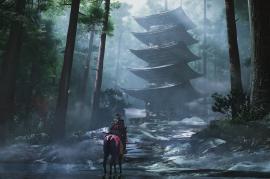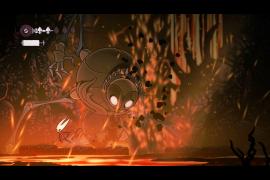Sekiro: Shadows Die Twice review
FromSoftware serves up another treat for gaming’s masochists
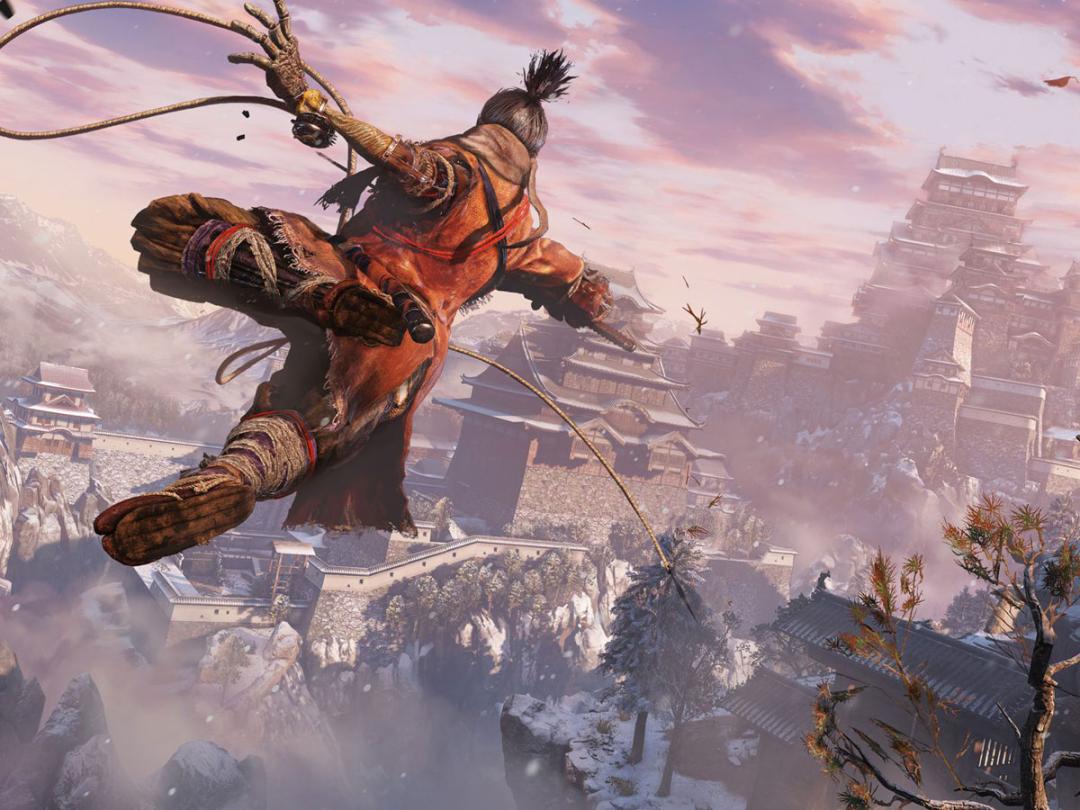
Japan’s FromSoftware has forged a reputation for making tough-as-nails games, mostly thanks to its more recent slew of action RPG titles: Demon’s Souls, the Dark Souls trilogy and Bloodborne. All make star features of their consistently challenging combat, opaque mechanics and deliberately obtuse storytelling.
Sekiro: Shadows Die Twice, From’s latest release, looks outwardly similar to the “Soulsborne” games, but needs to be approached in quite a different fashion. In fact, I think it’s arguably harder than any of its From-made predecessors – and likely the most demanding “mainstream” game that’ll be released this year.
Samurai showdown
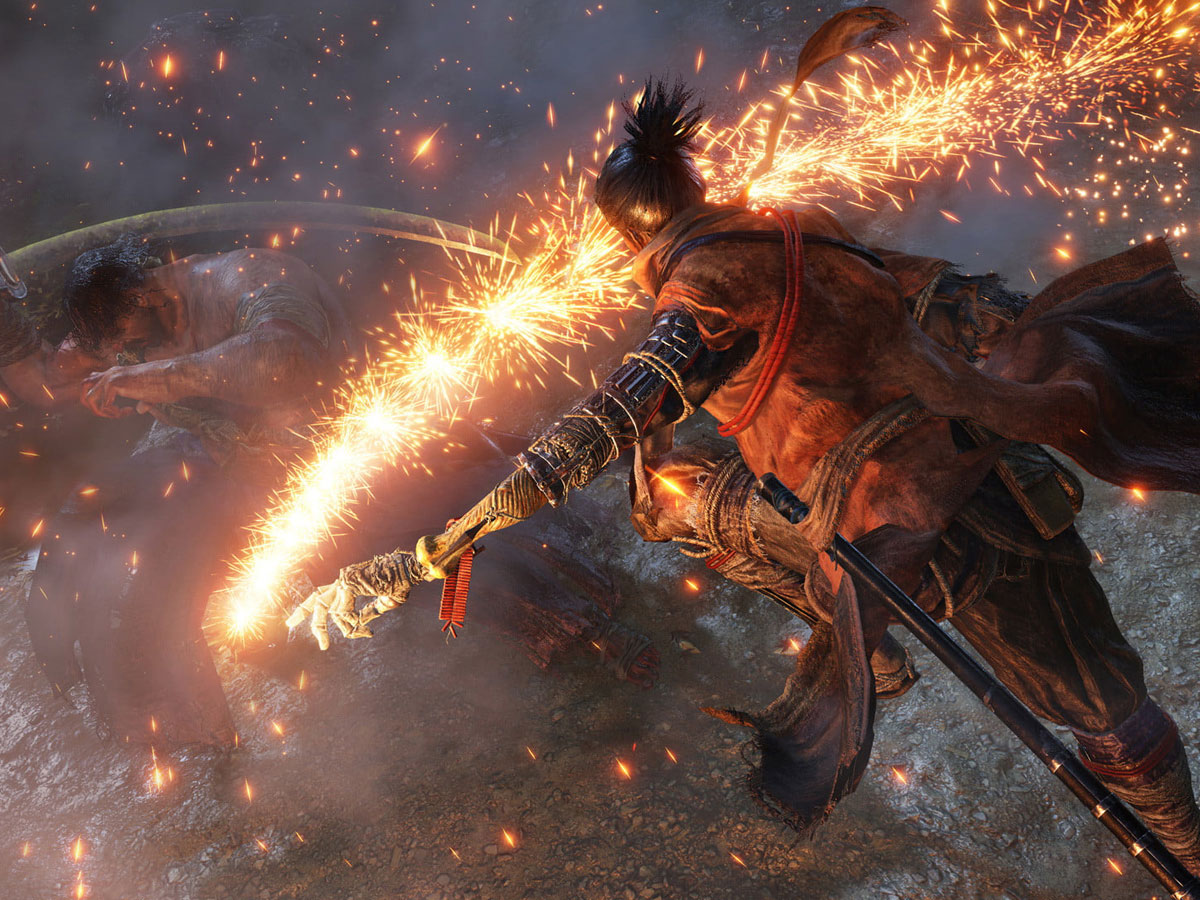
Set in Japan’s Sengoku medieval period, Sekiro casts the player as Wolf, a shinobi in the service of a young lord. When the lord is kidnapped by a samurai, who lops off Wolf’s left arm in the process, our hero embarks on a journey to rescue his charge, restore his honour and take revenge.
It’s a simple premise, and set up with very few cut scenes, but in typical From fashion there’s lots of other stuff going on if you want to look for it: mysterious supporting characters, information revealed in item descriptions and story told through the world and environment itself.
As you progress through the story, you discover buddha shrines that act as save and fast travel points, much like the bonfires of Dark Souls games or the lamps of Bloodborne. There’s also a central hub – in this case a dilapidated temple – which you can return to improve your skills and kit out your new prosthetic left arm with gadgets you’ve discovered in the world.
What’s different here is that while the Soulsborne games are RPGs that let you create and customise your own character, Sekiro forces you to play as Wolf and features less in the way of “levelling up” – you can unlock new abilities and increase basic stats as you progress, but much of this requires you to defeat extremely challenging bosses. There are only a handful of weapons at your disposal rather than the dozens in a Dark Souls game, and no types of armour at all.
And because this is an entirely single-player experience, you can’t summon other players to help you out through a particularly tricky part. Much more than other From games, Sekiro forces you to play on its own terms.
Parry, please
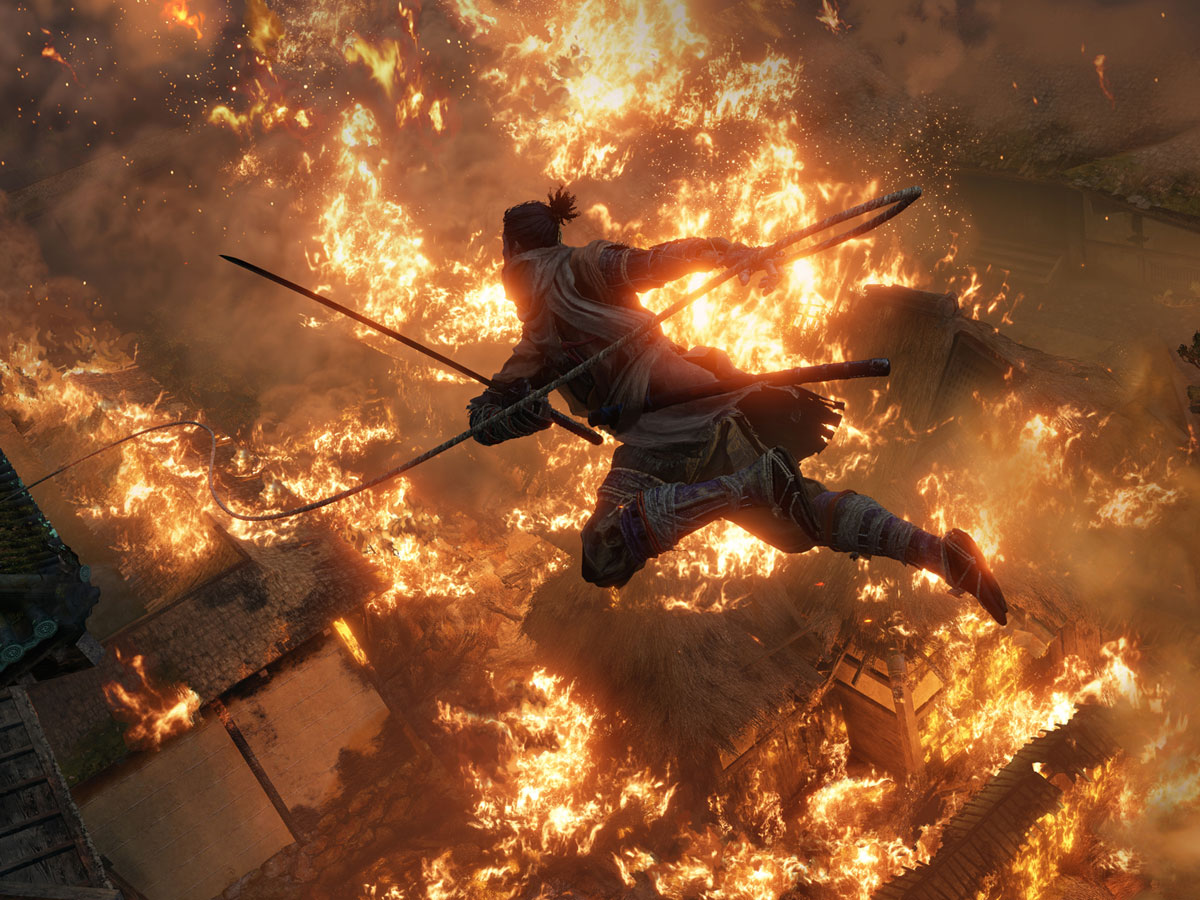
Which brings us to combat, Sekiro‘s crowning glory and potentially the part that will deter and frustrate most players.
If you approach fights in the same way as you would in Dark Souls or Bloodborne, you’re going to have a bad time – and that’s the case whether you’re fighting a powerful boss or a lowly group of henchmen. Most bosses and mini-bosses I’ve encountered in my 20 or so hours with the game will kill Wolf in a couple of hits, and even mob enemies can finish him off with a few blows.
Both enemies and the player have two bars: one for health (called Vitality) and one for Posture, and keeping an eye on these is key to winning fights. When you strike at an aware enemy with your sword, it’ll usually impact one of these bars: if the enemy blocks, its Posture bar will begin to fill; if it doesn’t, it’ll take a hit and its Vitality will decrease. When Vitality hits zero, the enemy dies; when Posture fully fills, the enemy becomes staggered and open to a deathblow, which will in most cases kill it instantly.
The exceptions to the above rule are bosses and mini-bosses, which usually require at least two deathblows to dispatch. Also, and this is really important: if a strike is blocked by a perfectly-timed parry by Wolf or an enemy, called a deflection (there’s a visual and audio cue to denote when this happens), then the striker’s Posture bar increases, rather than the strikee’s.
Wolf can dodge and jump, but ideally these should be used in certain situations only. Generally, the game wants you to get in an enemy’s face and trade blows, striking and parrying in a dazzling, deadly dance that ends with you smashing through their Posture and delivering a killing blow.
For a Dark Souls or Bloodborne player, unlearning those games’ combat styles to embrace Sekiro‘s is a tough ask, and I think it’s why I and so many other FromSoftware fans are struggling with this game’s more demanding fights. There’s years of muscle memory to wipe, and that’s not easy – but boy, is it fun.
The feeling when you finally settle into a face-off, allow the duelling to click and beat an enemy that’s been repeatedly kicking your arse nothing short of sublime, really; it’s one you don’t often get with modern games.
As for dodging and jumping, those moves come to the fore in situations where enemies attempt unblockable “perilous” attacks. You’re forewarned of these by a sound cue and red kanji symbol appearing above the foe’s head, but there are three different types: grab attacks need to be avoided through the dodge or jump, while thrusts and sweeps can be countered by the appropriate move to inflict huge damage to the attacker’s Posture. So ideally you’ll want to “lean in” and punish enemies for attempting these attacks rather than by simply avoiding them.
Swift and sneaky wins the race
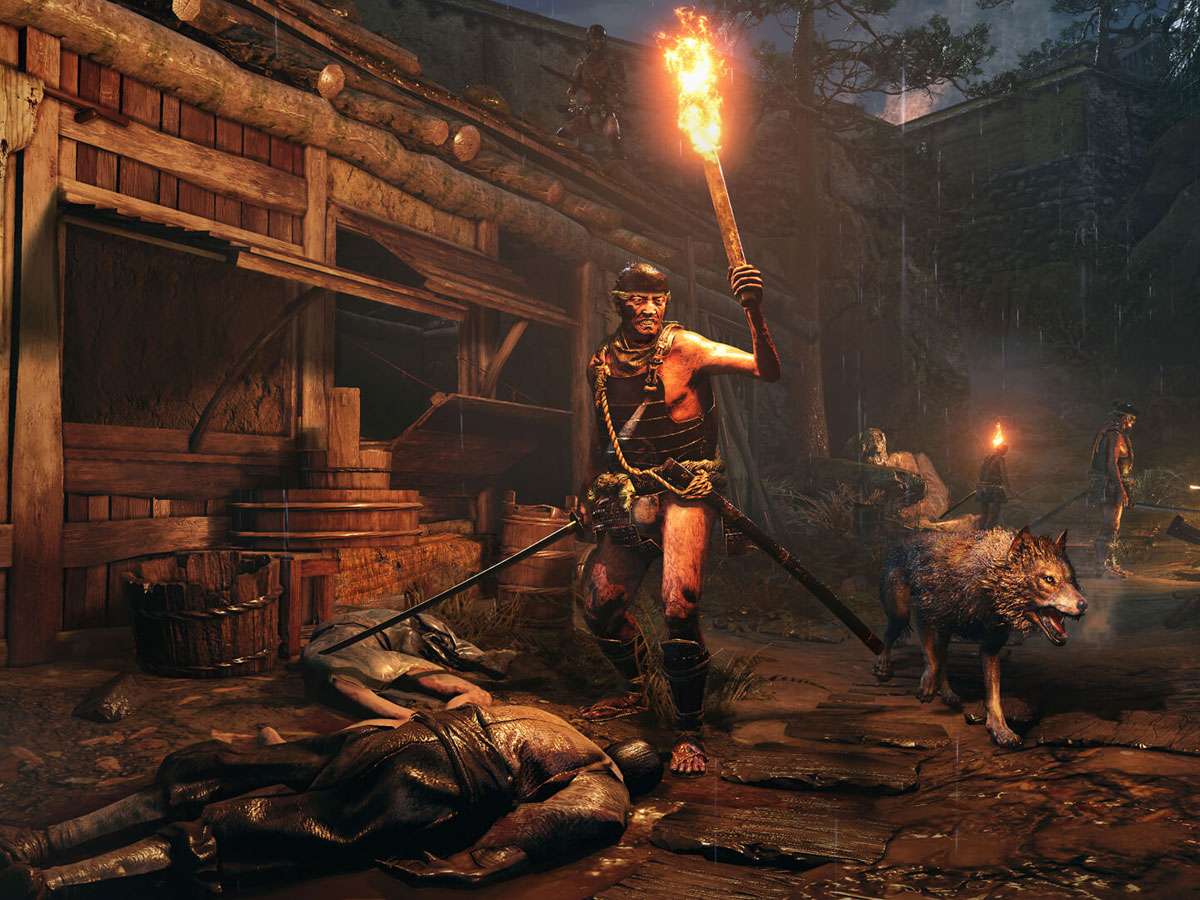
There’s another aspect of combat that needs to be absorbed, and it’s the requirement to fight the enemy on your terms, not theirs.
Wolf is not an honourable samurai; he’s a shinobi, and you’re often told by other characters and the in-game hints that you should fight like one. That means stealth, dirty tricks, running off to heal up when required and using all the tools at your disposal.
Sneak up behind an enemy, or drop onto them from above and you can inflict an instant deathblow – no need to engage in a sword fight at all. There’s long grass to hide in, walls to skirt and climb and, thanks to your prosthetic arm’s grappling hook, the ability to soar around the environments in ways no Souls game ever offered.
You’re not supposed to fight fair here, and many a mini-boss can have their first deathblow marker removed if you patiently sneak up behind them and inflict a stealth attack – effectively halving their health and making for an easier sword fight.
Equally important when engaging large mobs of enemies is observing them from the safety of a rooftop or ledge, then separating and killing them individually if possible.
You only die twice
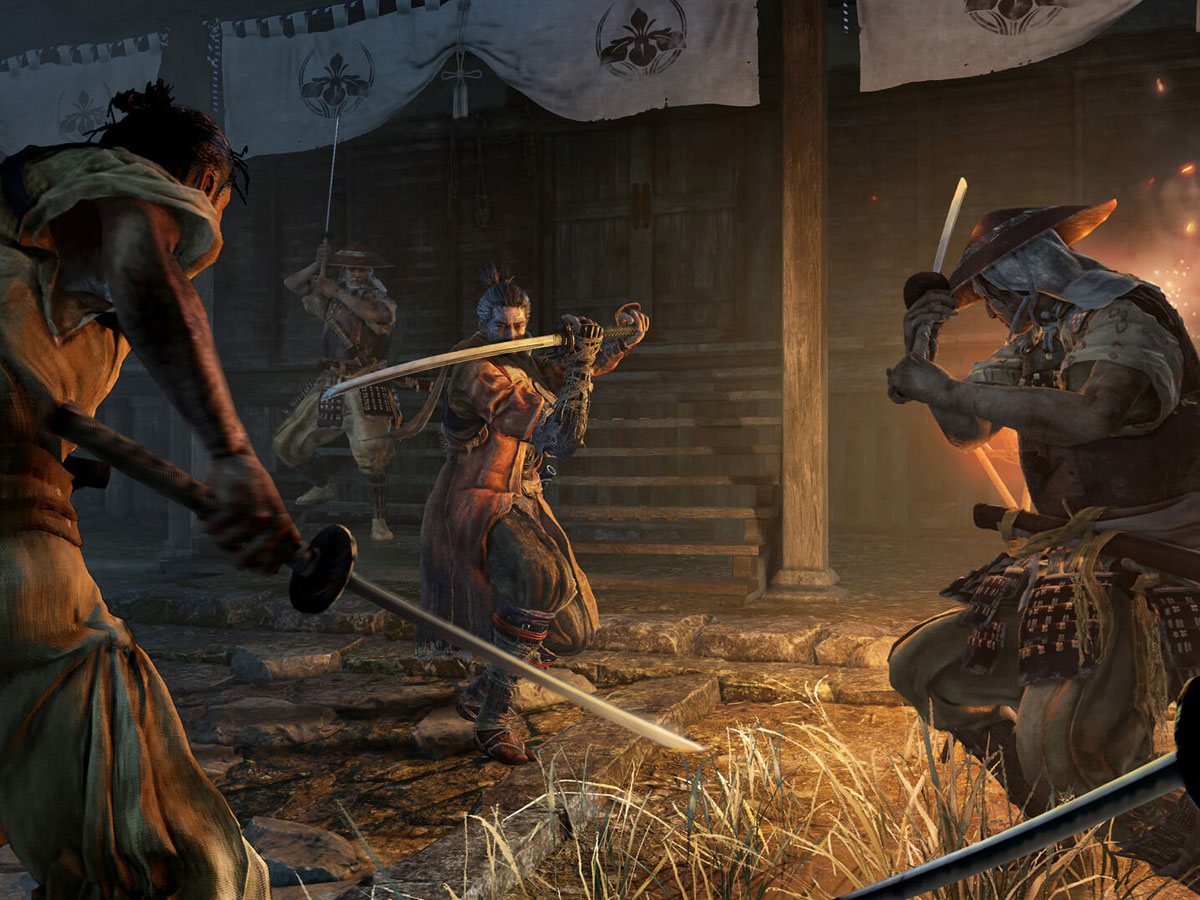
You will die, of course – a lot. But Wolf has the ability to resurrect once, immediately returning to the fight. Die again and you’re forced to return to the last buddha statue you communed with, losing half of your Power (read: experience points) and Sen (money) in the process, unless by luck you gain a blessing called Unseen Assistance.
This replaces the traditional “corpse run” mechanic of Soulsborne games, where you lose everything upon death but get one chance to return to the scene of your demise and collect your XP.
Kill enough enemies, use an item or rest at a statue and you’ll be able to resurrect once more, and the game’s Dragonrot mechanic means you’ll want to ensure you don’t die twice too often. Every time Wolf endures a true death, a mysterious disease spreads around the world, infecting NPCs and lessening your chances of gaining Unseen Assistance. Dragonrot can be cured periodically, but not for free.
Sekiro: Shadows Die Twice – verdict
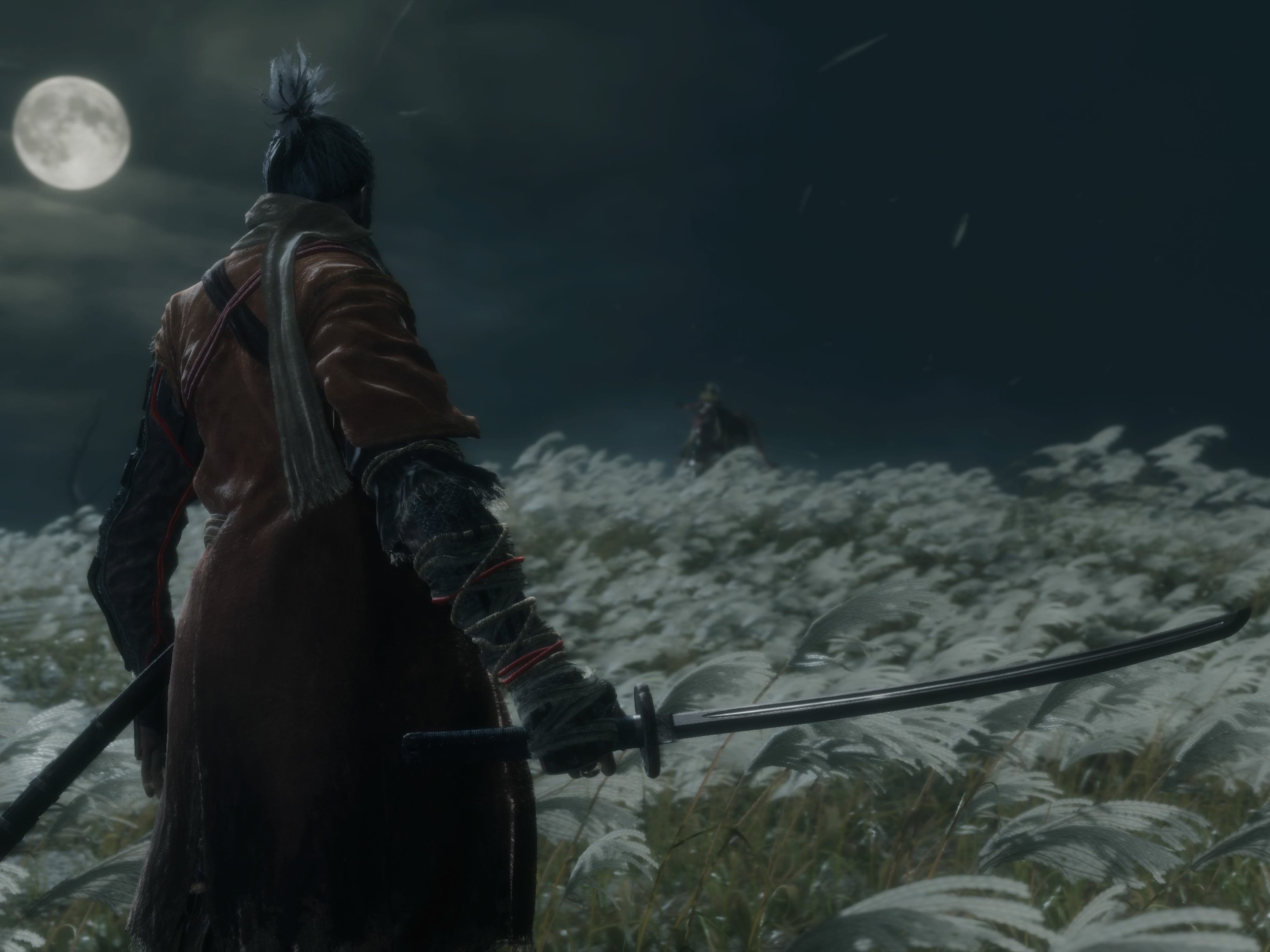
I don’t think this is a game for everyone. Light on hand-holding and big on heavily punishing players for the slightest mistake, Sekiro is a major test of reactions, skill and patience.
The pay-off is that you’ll feel like a true katana master when you do finally nail a flurry of perfect deflections, plus get to explore more of the wonderful environments created by FromSoftware, advancing the story and meeting yet more colourful characters who are going to smack you around.
Despite dying hundreds of times (spoiler: you will certainly die more than twice in Sekiro), bellowing obscenities at my TV as Wolf crumples to the dust once more, I’ve had so much fun with this game and attempting to meet its challenges that I’m going to play through the whole thing again right away.
As with Dark Souls, Demon’s Souls and Bloodborne, there’s a certainty that every obstacle can be vaulted with the right combination of skill, timing and yes, a little bit of luck. If you value a game that makes you work for its rewards, Sekiro is worth its weight in gold. But if you view your gaming time as a means to relax and gently work your way through a compelling story, you may find its challenges simply too demanding.
Stuff Says…
Dark Souls’ DNA gets a timely reworking in this epic Far Eastern action-adventure – but the legendary difficulty hasn’t gone anywhere
Good Stuff
Deep, challenging combat system
A welcome twist on the Soulsborne games
Heart-pumping boss battles
Intricately designed game world
Bad Stuff
The camera can be tougher than any boss

